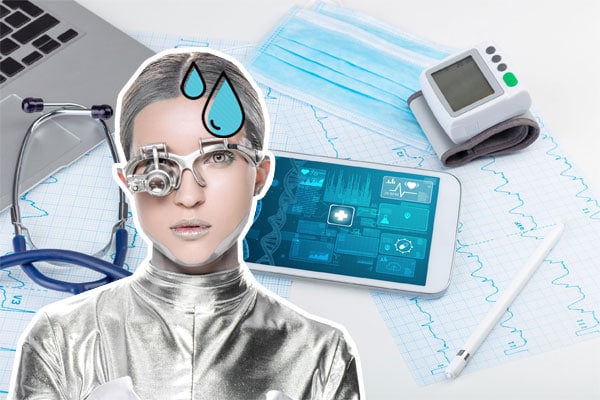
Michael Joe Cini
26th August 2021
Wearable medical devices powered by sweat?
A flexible battery that is energised by sweat was developed by researchers at Nanyang Technological University, possibly revolutionising the way medical wearables are powered
This is not the first use of sweat when it comes to medical applications, as it has also been used to monitor or detect disease. A small electrical current is generated when sweat is added to the stretchable device that integrates silver flakes that clump together.
Clean and renewable energy has been, somewhat, lacking when it comes to cost efficiency, as well as battery technology not being the best. Having the ability to power a body accessory directly using sweat could definitely help solve this problem!
 In a press release, researcher Lyu Jian said, “Conventional batteries are cheaper and more common than ever, but they are often built using unsustainable materials which are harmful to the environment”
In a press release, researcher Lyu Jian said, “Conventional batteries are cheaper and more common than ever, but they are often built using unsustainable materials which are harmful to the environment”
“They are also potentially harmful in wearable devices, where a broken battery could spill toxic fluids onto human skin. Our device could provide a real opportunity to do away with those toxic materials entirely.”
This is how the sweat powers the newly-developed battery:
- The abundant chloride ions in sweat are the primary property that the battery takes advantage of
- This is done through a stretchable fabric containing silver flakes that act as electrodes
- The silver flakes then clump up due to the acidity and chloride ions in sweat, creating an electric charge
- This means that being physically active is not necessarily the trigger, but sweating is
Another researcher, Lee Pooi See, explained that their technology “heralds a previously unreachable milestone in the design of wearable devices”.
 “By capitalising on a ubiquitous product, perspiration, we could be looking at a more environmentally friendly way of powering wearable devices that does not rely on conventional batteries. It is a near-guaranteed source of energy produced by our bodies. We expect the battery to be capable of powering all sorts of wearable devices.”
“By capitalising on a ubiquitous product, perspiration, we could be looking at a more environmentally friendly way of powering wearable devices that does not rely on conventional batteries. It is a near-guaranteed source of energy produced by our bodies. We expect the battery to be capable of powering all sorts of wearable devices.”
Testing has been moving along nicely, with one volunteer spending 30 minutes cycling. A temperature sensor communicating with a smartphone through bluetooth was successfully powered by the battery.
“Our device could be more durable than current technology, as we showed it could withstand strain from a wearer’s daily activities, and repeated exposure to stress or sweat,” Lee Pooi See continued, going on to add that, “The slim size of our battery also solves two problems in wearable tech: traditional button batteries are a problem for achieving the sort of sleek aesthetics that are attractive to consumers, while thinner batteries reduce the item’s ability to carry enough charge to last throughout the day.”
Energy Harvesting
Sweat is not the only method being looked at for cost-efficient modes of energy generation. Researchers at Purdue University created smart fabrics that can harvest energy from Wi-Fi networks and radio waves, which would then go on to power the wearable accessories. An interesting aspect of these smart fabrics is that they are totally washable, water repellent, and breathable.
The device operates by stitching lightweight and elastic omniphobic silk-based coils made of a silk-nanocarbon composite into fabrics. In turn, the coils absorb energy. The researchers spray the fabrics with hydrophobic molecules to make them water repellent.
The fabric’s flexibility and breathability are unaffected by this treatment. They can also be washed without losing their functionality. Furthermore, because of the technology’s scalability, it can be produced in large-scale sewing facilities.
Researcher Ramses Martinez explained that “by spray-coating smart clothes with highly hydrophobic molecules, we are able to render them repellent to water, oil and mud”.
“These smart clothes are almost impossible to stain and can be used underwater and washed in conventional washing machines without damaging the electronic components sewn on their surface.”
Med-Tech World: 18th-19th November 2021
The Med-Tech World conference, which follows a successful digital event in 2020, will run from 18th-19th November 2021 and will highlight innovations and developments in digital health across the globe. With so many countries realising the potential for exponential growth, Med-Tech World will address the opportunities and challenges driving this multi-million forum – embracing the potential for technological innovation to change the face of medicine in this global sector. Register your interest here!






